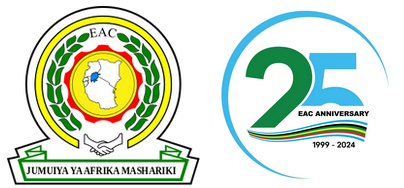Regional Trade
Regional Trade Integration
Regional trade integration is a cornerstone of EAC Partner States’ trade policies. This involves, among other initiatives, strengthening of public institutions and private sector organizations involved in export promotion.
- The internal EAC market has about 145.5 million consumers (EAC Facts & Figures Report, 2015).
- The Common Market for Eastern and Southern Africa (COMESA) comprises 19 Member States with a population of over 390 million. Burundi, Kenya, Rwanda and Uganda are all members;
- The Southern African Development Community (SADC), established in 1992 and with 15 Member States among which is Tanzania - the only EAC state that also belongs to the Southern African bloc with a population of 277 million;
- Burundi, Rwanda, Tanzania and Uganda are covered by the EU’s Everything But Arms (EBA) initiative, under which all products from Least Developed Countries (LDCs) except arms and ammunition have preferential access to the EU market;
- Together with other Sub-Saharan African countries, the EAC Partner States also qualify for duty-free access to the US market under the African Growth and Opportunity Act (AGOA);
- Products from EAC countries can access various markets in the developed world through the Generalised System of Preferences (GSP), which offers preferential treatment to a wide range of products originating in developing countries;
- Membership in the African, Caribbean and Pacific States (ACP) and the Generalised System of Preferences (GSP), enables products from Partner States to qualify for preferential tariffs on exports to member countries; finally
- Burundi is a member of the Economic Community of Central African States (ECCAS) which aims at establishing a Central African Common Market.
Regional Trade Enhancement
A number of measures have been taken at the Community level to enhance trade, and these include the following:
- The Customs Union Protocol - The objectives of the Customs Union include furthering the liberalisation of intra-regional trade in goods; promoting production efficiency in the Community; enhancing domestic, cross-border and foreign investment; and promoting economic development and industrial diversification;
- Trade Facilitation - The Partner States have agreed to cooperate in simplifying, standardising and harmonising trade information and documentation so as to better facilitate trade in goods;
- Anti-dumping measures - The Community has developed anti-dumping regulations, as elaborately highlighted in the EAC Customs Union Protocol;
- Competition Policy and Law – EAC already has in place an EAC Competition Policy and Law currently being implemented by the Partner States with an aim to deter any practice that adversely affects free trade within the Community;
- Re-export of goods - Re-exports are to be exempted from the payment of import or export duties;
- Non-Tariff Barriers (NTBs) to trade - Under Article 13 of the Customs Union Protocol, the EAC Partner States have agreed to remove all existing non-tariff barriers to trade and not to impose any new ones;
- Standards and Measures - Under Article 81 of the Treaty Establishing the Community, the EAC Partner States recognised the importance of standardisation, quality assurance, metrology and testing (SQMT) for the promotion of trade and investment and consumer protection, among other things.
